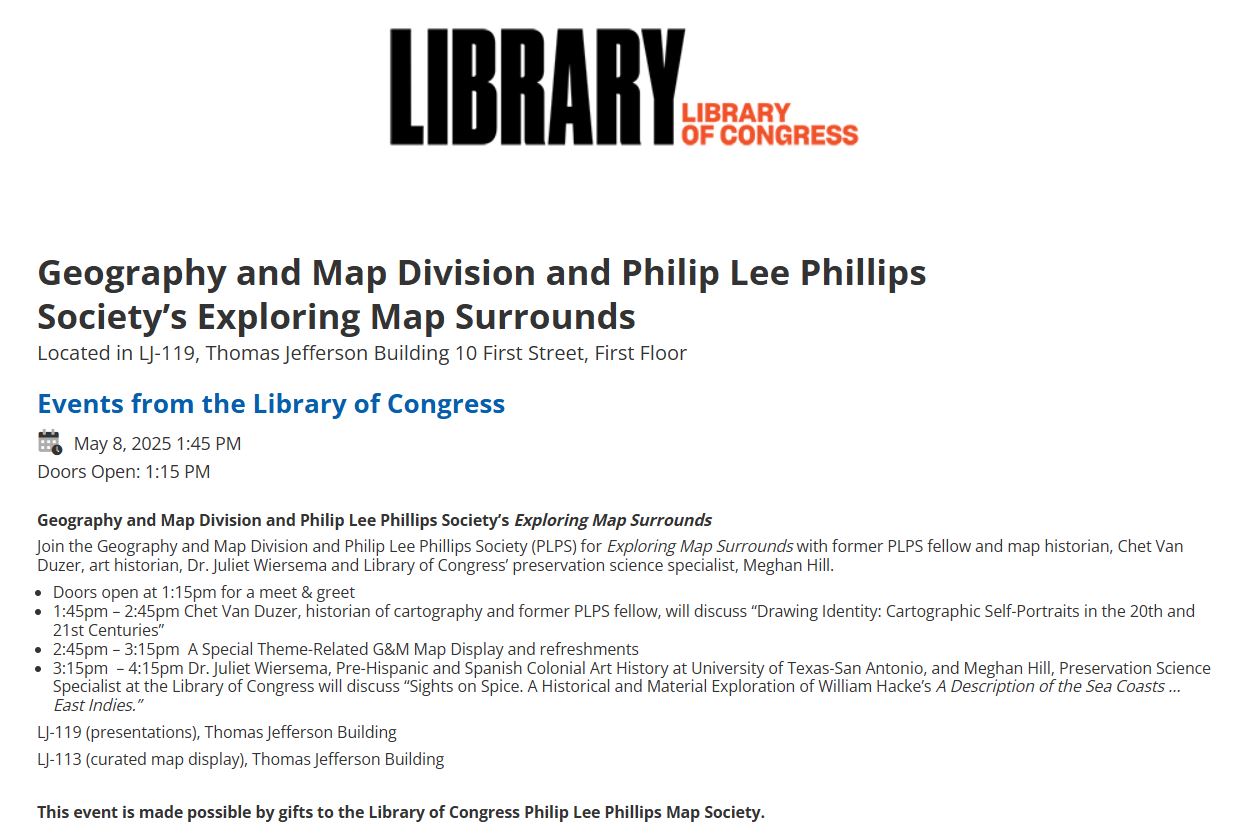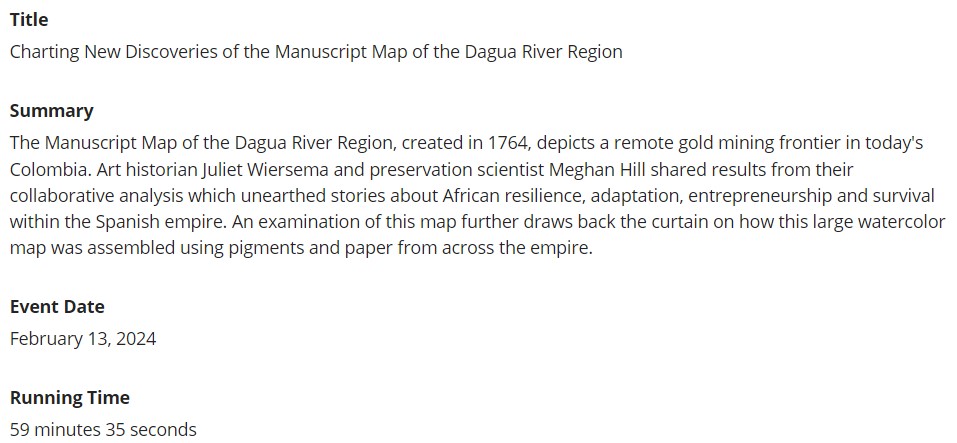Library of Congress Geography and Map Division and the Philip Lee Phillips Society

Topics on Preservation Series.
The Library of Congress
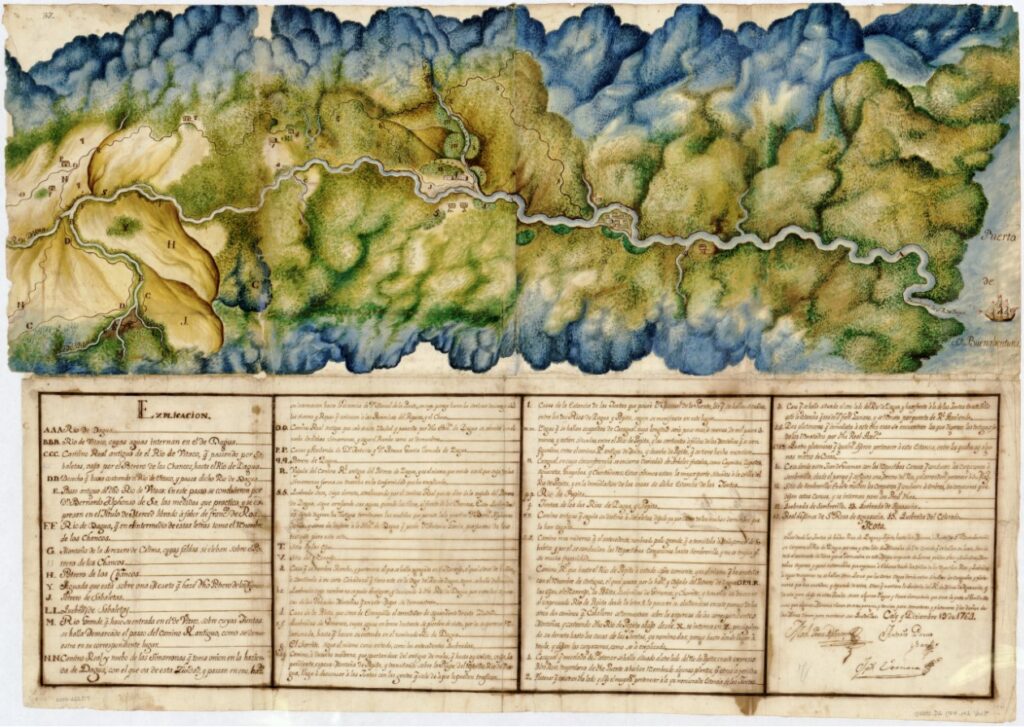
GEOPAM (Geopolitica Americana de los siglos XVI-XIX)
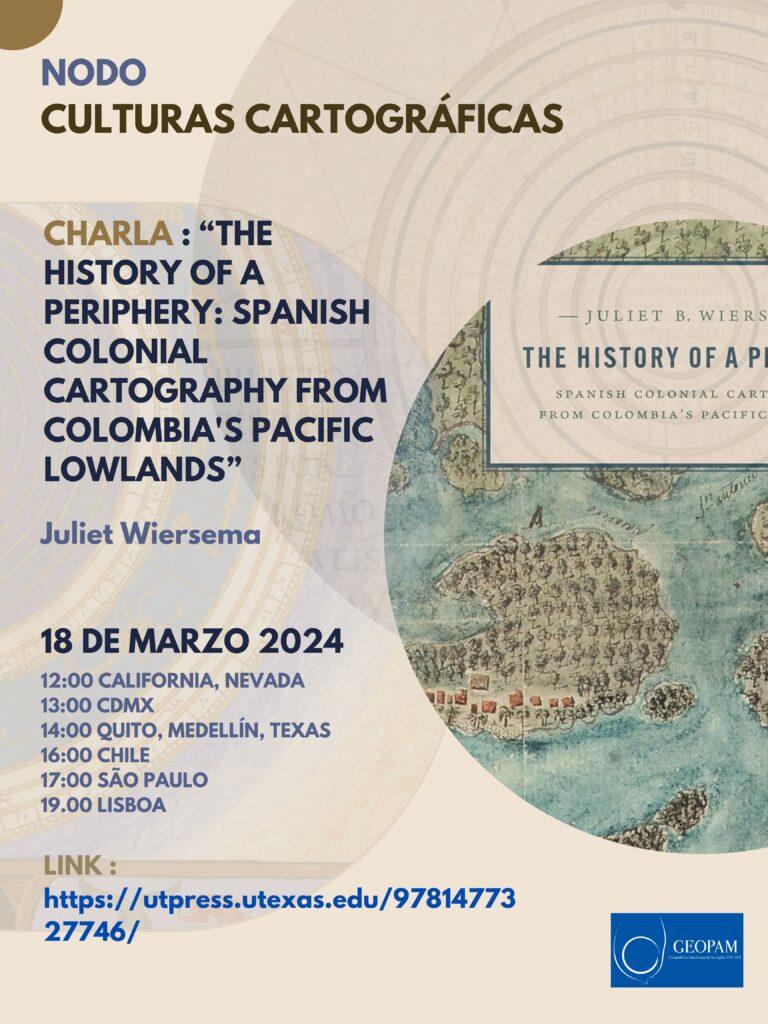
The History of a Periphery:
Spanish Colonial Cartography from Colombia’s Pacific Lowlands
Event date
March 18, 2024 at 2:00 pm Central Time on Zoom
During the late Spanish colonial period, the Pacific Lowlands, also called the Greater Chocó, was famed for its rich placer deposits. Gold mined here was central to New Granada’s economy, yet this Pacific frontier (in today’s Colombia) was considered the “periphery of the periphery.” Infamous for its fierce, unconquered Indigenous inhabitants and its brutal tropical climate, it was an area rarely visited by Spanish administrators, engineers, or topographers. As a result, it seldom appeared in detail on printed maps of the period. In this talk, Juliet Wiersema will share recent research on little-known manuscript cartography from this under-examined corner of the Spanish empire. By interrogating these handmade maps and identifying the arguments they make, she unearths untold narratives about ephemeral settlements, African adaptation and autonomy, Indigenous strategies of resistance, and tenuous colonialisms on the margins of a beleaguered viceroyalty. These maps, she argues, shed light on how a “periphery” was imagined and projected, largely for political or economic reasons.
Razon Cartografica. Agua y Tierra. I Simposio colombiano de historia de la geografía y la cartografía
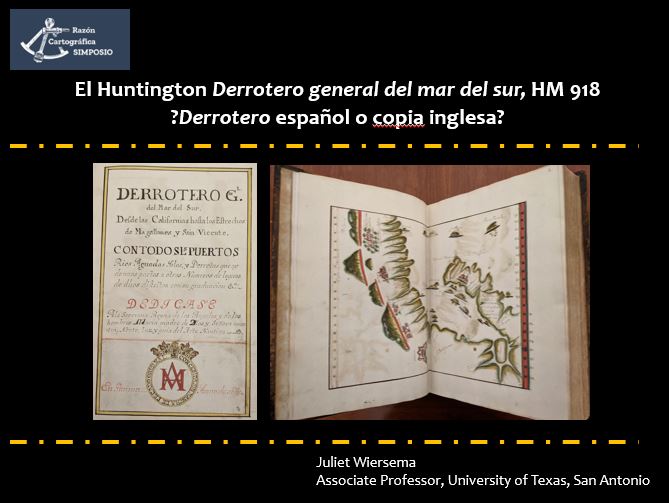
El Derrotero general del mar del sur, Huntington HM 918 ¿Derrotero hispanoamericano o copia inglesa?
Event date
September 13, 2024
Cartagena de Indias, Colombia
In the collections of the Huntington Library in San Marino, CA, is a large atlas, the Derrotero general del mar del sur, whose 149 charts depict detailed coastal renderings of the Pacific Ocean, from Cabo San Lucas to Tierra del Fuego. Made by hand, with a dateline “Panama, 1669,” this book of Spanish sea charts was initially proposed to be the derrotero seized by the English pirate, Bartholomew Sharpe, during his 1681 capture of the Spanish vessel, the Rosario, off the coast of Ecuador (Shulz, Cutherbert, and Noya 1962).
More recent scholarship has proposed that HM 918 may, instead, be the derrotero taken by the English pirate Henry Morgan during his sack of Panama a decade earlier, in 1671 (Howse and Thrower 1992: 263-264).
But, what if HM 918 is not what it purports to be: an atlas produced by Spanish navigators in the Audiencia of Panama in 1669? What if instead it is an English copy of a Spanish derrotero, produced by chart makers in London or in the English-held territory of Jamaica?
The discovery of a very similar derrotero (Ms 221) in the Society of Antiquaries in London helps to highlight some of the Huntington derrotero’s anomalies, including textual errors and watermarks that are inconsistent with paper in circulation in Spain’s colonies.
How might a reattribution of HM 918 alter its own history as well as our understanding of elaborate, presentation-style derroteros produced during the late seventeenth century as England was making incursions into Spanish seas?
65th Annual Conference of the Society for the History of Discoveries. Frontiers and Borderlands of Exploration

Keynote address
Secrets and Deceptions in Manuscript Maps of the Pacific
Event date
October 25, 2024
San Antonio, Texas
GEOPAM. De los atlas a los astrolabios: cartografía y navegación, 1500-1800



